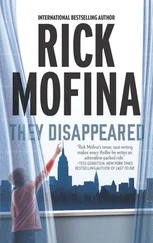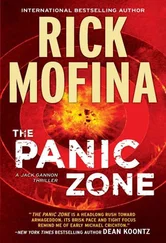As Murther disconnected, Kate went online to get contact information for Starglide’s press office, which was at the company headquarters in Atlanta. While she was on hold, she researched the history of the plane. It seemed to have a good safety record, and she found an article in an aviation-industry magazine that noted the Starglide Blue Wing 250 had a state-of-the-art flight-management system.
Something pinged in the back of Kate’s mind. She went back to her interview with Captain Raymond Matson, who’d said the problem with Flight 4990 was a “clear flight control computer malfunction.”
“Chad Perkins, Starglide.”
“Kate Page, Newslead. I’m calling for Starglide’s response to the Heathrow crash.”
“Of course, our thoughts go out to the families of those who were killed and injured. Air safety is our priority. Kate, we’ll be issuing a full statement in about forty-five minutes.”
“Any thoughts on what might have happened?”
“It’s too early to speculate, but I assure you we’ll cooperate fully with the investigation. Excuse me, I have other calls.”
“Chad, one last question. Who’s the maker of the fly-by-wire system installed in the Blue Wing?”
“That’s a matter of public record.”
“I know, but if you could confirm it.”
“Richlon-Titan of California.”
Kate sat up.
That’s the same system as Flight 4990’s.
She started writing fast, shaping her notes into a story to be inserted for updates on Newslead’s Heathrow coverage. As she worked, she heard Chuck Laneer’s voice, lifted her head and spotted him huddled across the newsroom with Reeka and Sloane.
Grabbing her notebook, Kate joined them just as Reeka was assuring Chuck that Newslead’s London bureau had the crash well covered.
“Sloane’s already checked and found it unlikely there’s a link between Heathrow and the LaGuardia plane,” Reeka said.
“Really?” Kate looked at Sloane. “You’ve confirmed that already, while the wreck is still burning? Before an investigation’s even begun, you have the answer?”
“It’s a different aircraft and different airline in London,” Sloane said. “Most likely a coincidence. And, despite popular opinion, my sources and I are confident that the Buffalo incident was pilot error.”
Kate shook her head.
“You know, Sloane, I just don’t get why you’re so quick to dismiss every unanswered aspect of these two cases,” Kate said.
“Kate,” Chuck said, “did you find anything, anything to add?”
“Yes. The NTSB is sending an investigative team to London.”
“That’s standard,” Sloane said. “The Blue Wing’s American-made.”
“And-” ignoring him, Kate flipped pages of her notebook “-the flight-management system in the Heathrow plane was made by Richlon-Titan. Both aircraft have the same system.”
“You’ve confirmed this?” Reeka asked.
“Just now, on the record with Chad Perkins, Starglide’s spokesperson in Atlanta. As you will recall, the captain of the Buffalo plane told us that he thought the problem was a system malfunction.”
Chuck removed his glasses and stroked his chin.
“Remember,” Kate said. “Our messenger warned of an incident if we didn’t run a story crediting him for the EastCloud flight. We didn’t run the story and now we have an incident with a plane that has the same flight-management system. Only now we have deaths. Chuck, we need to take a hard look at the Shikra flight.”
Chuck folded his arms and tapped his glasses to his teeth.
“I don’t want to gamble with this. I’ll talk to Howard about alerting Heatley at the FBI. Kate, I want you on a plane to London as soon as possible.”
Washington, DC
Robert Cole from North Dakota on hold for you, Jake. He says it’s important.
Jake Hooper winced at the text message from reception, then texted his response.
Thanks. I’m tied up; tell him to leave a voice message.
For Hooper, the thought of Robert Cole always generated a wave of sadness- such a tragic case -but he returned to his notes as today’s progress meeting on the investigation into Flight 4990 began.
This morning it was being run by Bill Cashill, the investigator-in-charge. All investigative team members were involved to assess progress, share key technical information and update recent findings.
“Evans-” Cashill kicked things off in his usual gruff way “-what d’you have on the ELMS?”
Drew Evans and his team oversaw examination of the Electrical Load Management System, which distributed, monitored and protected electrical power to the aircraft. The system had the capability to record equipment failures and circuit faults going back some fifty flights.
“We’re still reviewing all the fault logs.”
“Did you find any anomalies?”
“Nothing so far.”
Next, Cashill went to Scott Severs for an update on data. Severs was examining the quick access recorder, which kept track of far more information than the flight data and cockpit recorders. The QAR, as it was known, provided a comprehensive record of some fourteen hundred aspects of the aircraft, and it did so for a longer period of time.
“What’s the QAR telling us, Severs?”
“Not a whole heck of a lot so far. We’ve looked at preflight, taxi and takeoff. All normal there. The initial climb was without incident. Autopilot and autothrottle presented no problems. While cruising, all systems functioned normally until the event began over the Catskills.”
“That’s when the safety features of the flight-management system were disabled,” Cashill said, “and the captain took manual control of the aircraft.”
“That’s correct.”
“Any indication of turbulence?” Cashill turned to Wendy Case, who handled weather systems.
“Nothing on radar and no flights in that sector within that window of time reported turbulence.”
“Right, but we know that clear-air turbulence is not visible on radar.”
Cashill turned to Irene Zimm.
“Irene, I understand you have an update. What can you tell us?”
“We’ve conducted more interviews. Roger Anderson, the first officer, is adamant he never saw Captain Matson disable the safety features and never commanded him to do so.”
“Yet the record shows they were disabled,” Cashill said. “Anything else?”
“In keeping with procedure, we reviewed crew phone records, conducted more interviews and studied crew activity seventy-two hours before the flight. One of the subjects we interviewed was Captain Matson’s former wife. She indicated that less than twenty-four hours before the Buffalo-to-New York flight, she and Matson had several telephone conversations that she characterized as confrontational-that Matson was aggressive, agitated and despondent over their divorce, being separated from his children and the need to sell their house in New Jersey.”
“This definitely puts his emotional state of mind into question,” Cashill said. “I think we should consider Matson’s psychological frame of mind a serious factor that warrants further investigation. What if, for a moment, Matson had decided to end his life, then changed his mind?”
“Hey.” Gus Vitalley of the pilots’ union pointed a finger at Cashill. “That’s wild speculation. Our mandate is to consider only the facts.”
“That’s what we’re doing, Gus. One by one we’re ruling out what doesn’t fit and compiling factors that do. It’s a fact Matson’s life was in crisis. It’s a fact he was taking an antidepressant. It’s a fact his divorce was being finalized. It’s a fact he was not happy at that moment of his life.”
“I think we’re forgetting other factors,” Hooper said.
Читать дальше
Конец ознакомительного отрывка
Купить книгу












